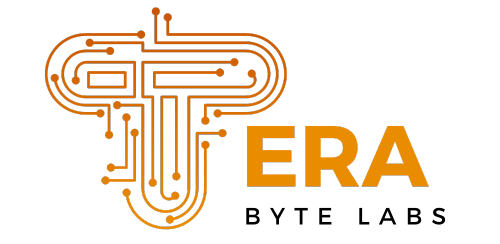When Steve Jobs first unveiled the iPhone in 2007, he boasted that it would completely change technology as we knew it. Fast-forward to today, and Apple is again making big promises about its new Vision Pro headset. This sleek piece of futuristic gear evokes a rush of excitement but also a healthy dose of skepticism. Would this device usher in a new era of computing, or are we just trying out another flashy gadget destined to gather dust in a year?
The truth about Vision Pro lies between groundbreaking breakthroughs and imperfect first try. There’s no doubt that this is an ambitious leap into the future (partly virtual, partly physical). Like any first-generation product, it has its share of quirks and limitations. Let’s dive into what makes the Apple Vision Pro tick and why it might reshape our digital landscape.
Design and Comfort
The Vision Pro is unmistakably Apple in its design aesthetic. The curved glass front and precision-machined aluminum frame exude quality. However, at 638 grams, it is no featherweight. The headset’s weight distribution, primarily front-loaded, can cause fatigue during extended use.
Apple’s decision to separate the battery pack from the headset is a double-edged sword. While it allows for a more balanced design and the ability to lean back comfortably, it introduces a new challenge – managing a cable tethered to your head. The external battery, surprisingly small at 3,366 mAh, offers a modest 2-4 hours of use, which may limit extended sessions.
Display and Visuals
The Vision Pro’s display technology is nothing short of spectacular. Dual micro-OLED displays boast a combined resolution of 23 million pixels, delivering unprecedented visual fidelity in a consumer headset. The 100Hz refresh rate ensures smooth motion, which reduces motion sickness.
Dr. Marty Banks, a professor of optometry at UC Berkeley, notes that Vision Pro’s display technology “represents a significant leap in visual comfort for near-eye displays.” This advancement could allow for longer, more comfortable use of mixed reality devices.

Passthrough and Spatial Awareness
One of the Vision Pro’s standout features is its passthrough technology. Unlike traditional VR headsets that isolate you from your surroundings, the Vision Pro’s high-resolution cameras and low-latency processing (under 12 milliseconds) create an almost seamless view of the real world.
The 90Hz refresh rate and impressive dynamic range adjustment make interacting with your environment feel natural. You can easily catch objects, read notifications on your phone, or even play ping-pong while wearing the headset. It’s not perfect—up-close objects can appear blurry, and you can’t read the fine print—but it’s a significant leap forward in mixed reality technology.
VisionOS
Apple’s new operating system, VisionOS, reimagines how we interact with digital content in three-dimensional space. Navigation is primarily through eye tracking and hand gestures. Look at an app icon and pinch your fingers to open it. Scroll by pinching and pulling as if tugging an invisible string. This new paradigm takes some getting used to. It would help if you always looked directly at what you’re trying to control, which can initially feel unintuitive. However, once you adapt, the responsiveness and fluidity of the interface are remarkable.
Performance and Processing Power
Under the uturistic tech gadget case is an M2 chip paired with an R1 chip for sensor processing to keep everything running smoothly. This powerhouse combo easily handles complex 3D renderings and multiple apps, though it can warm up during intensive tasks.
The App Ecosystem
The Vision Pro’s app ecosystem is currently split into two categories: apps explicitly built for Vision Pro and compatible iPhone/iPad apps. The former showcases the device’s true potential, while the latter provides a bridge to familiar functionality. Apple’s stock apps, redesigned for Vision Pro, demonstrate the possibilities of spatial computing.
The Music app, for example, features a glassy, frosted window that adapts to its surroundings. Media apps like Apple TV and Disney+ offer immersive viewing environments that transform your space into a personal theater. Third-party apps like Sky Guide and Jig Space hint at the educational and exploratory potential of the platform. Sky Guide lets you examine constellations in 3D space, while Jig Space allows you to manipulate life-sized 3D models in your environment.
Interestingly, the gaming world is also adapting to this new platform. VR casinos are now a thing, even with the Apple Vision Pro, offering a new dimension to online gambling experiences. While this raises questions about responsible gaming in immersive environments, it showcases the platform’s versatility.
Challenges and Limitations
The Vision Pro is jam-packed with cutting-edge tech, but it has limitations. Let’s say you want to jot down some notes or fire off a quick message without diverting your gaze. Your options are limited to awkwardly pecking at a virtual keyboard, slowly blinking out letters one-by-one using eye-tracking, or shouting into the void and hoping the voice recognition doesn’t misinterpret you.
There’s no dedicated power button to turn the Vision Pro off wholly.
You have to unplug the device straight up. For a device meant to usher in the future of computing, that feels backward, doesn’t it? The biggest obstacle to the device’s mainstream adoption is the eye-watering $3,499 price tag. Unless you’re a professional with money to burn, the Vision Pro is likely out of reach for casual consumers.

The Future of Spatial Computing
The Apple Vision Pro represents a significant step towards a future where computing is no longer confined to screens but integrated into our physical space. As noted by Mark Gurman, a leading tech analyst at Bloomberg, “Apple’s Vision Pro feels more like a preview of the future rather than the future itself.”
While it may not be a must-have device for everyone right now, its potential impact on industries ranging from education and healthcare to entertainment and design is undeniable. As the ecosystem grows and the technology matures, we may look back on the Vision Pro as the device that ushered in a new era of computing.
Frequently Asked Questions [FAQs]
Can I Wear Glasses With The Apple Vision Pro?
The Vision Pro comes with customizable inserts for various lens prescriptions, so users with glasses can enjoy crisp, clear, augmented worlds.
How Long Can I Immerse Before The Batteries Tap Out?
The external battery pack provides about 2-4 hours of use, depending on the applications running.
Can I Use The Vision Pro For Work?
The Vision Pro supports various apps for getting things done, even allowing you to configure virtual multi-monitor setups ideal for remote collaboration.
Is The Vision Pro Suitable For Gaming?
The Vision Pro can run immersive experiences, including some fledgling VR casinos for those inclined to play.
How Does The Vision Pro Compare To Other Vr Headsets?
The Vision Pro has exceptional mixed reality capabilities, best-in-class displays, and Apple’s intuitive controls. It outmatches most mainstream virtual reality gear.
Conclusion
The Apple Vision Pro represents a remarkable technological advancement. While flaws like cumbersome text input don’t dampen its relevance to pioneers across industries from healthcare to entertainment, it represents a significant leap forward in spatial computing.
While the probability of the Vision Pro becoming as widespread as the iPhone remains unclear, it undoubtedly offers a glimpse into the future of human-computer interaction.


